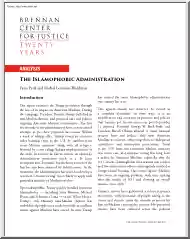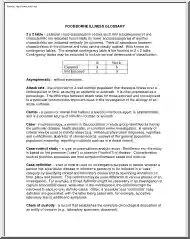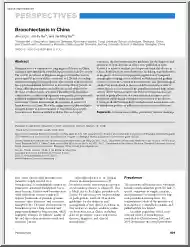No comments yet. You can be the first!
What did others read after this?
Content extract
Source: http://www.doksinet Gamification of education By Pim van de Pavoordt 1906445 Introduction For our final project for the course of Serious Gaming our team made a serious game called “Mappit!”. The reason we made this game was that we found the lack of topographical knowledge among us and other people disturbing and we wanted to improve topographical knowledge by letting players find out where news took place in an engaging way. However, I believe that this game would be unnecessary if learning in schools would be more fun and engaging, so that students would not forget their basic skills so easily. Using games for educational purposes could help achieve this goal. In this essay I will first explain why games should be used for learning purposes After that, I will show some examples of existing commercial games and how they can be used for educational purposes and also give examples of games made specifically for educational purposes. Finally this essay will show some
challenges for using games in education. Why use games for learning? According to current research, new generation children, who grew up with the Internet and computers all around them, are more likely to engage in online games than to interact with other students or teachers in a real life environment1. Zemsky and Messay2 elaborate on this matter by stating that students desire e‐learning technologies for three reasons. First of all they want to be connected to one another, secondly they want to be entertained through games, movies and music, and finally they want to present themselves and their work. Foreman3 also states that “Games expose players to deeply engaging, visually dynamic, rapidly paced, and highly gratifying pictorial experiences that make almost any sort of conventional schoolwork (especially when mediated by a lecture or text) seem boring by comparison” (p15). Finally, Neal4 and Prensky5 also believe that in the future game technology will replace standard
classrooms, lectures and tests with fun and interactive learning environments. All these statements make it look like games used for learning are far more engaging than traditional teaching methods that they can replace the traditional methods. This does not have to be the case Games can also be integrated into a range of other curricular activities. By doing this games can enhance traditional methods by making teaching more fun and engaging, while still keeping the traditional way of teaching. Next to all reasons why games could be important for learning, games themselves show that they have outgrown their purpose of only being fun and entertaining as well. First of all there is the technological development in the games industry. The current generation of commercial games include simulations of real‐world situations, complex AI and give players the opportunity to make their own decisions and see the impact of their decisions. This advancement in technology shows that games can be
far more than only entertaining and are powerful enough to make high‐quality educational games. Next to that, many of the existing top‐selling titles already inform as well as entertain (for example strategy games like Civilization or simulation games like Sim City). Source: http://www.doksinet Existing commercial games for learning During a one‐year study three commercial off‐the‐shelf computer games were used for educational purposes among different schools6. The study was designed to give an overview of both teachers’ and students’ use of and attitudes towards using existing games in schools. Three games were used in this study, which were all ‘god games’, where the player has control over the entire environment. The games used in this study were The Sims 2, RollerCoaster Tycoon 3 and Knights of Honor. In The Sims 2 players control characters called “Sims” and guide them through their lives from infancy through childhood and teenage life to adulthood.
Players first have to give the Sims a personality and after that the Sims will develop in unique ways based on the player’s choices. The game itself already learns students about decision making, how to interact with people and about basic things in life (cleaning the house, getting a job, etc.) Next to that through the whole experiment teachers used the Sims for other purposes. They used the ability to export images using the movie creator for use in other contexts, for example for drama. They also used the daily tasks performed in The Sims for class discussion. And finally they used the aspirations and social needs of the Sims as topics for class discussion. In RollerCoaster Tycoon 3 the player acts as a theme park manager. Players control elements in order to improve the happiness of employees and guests. The game itself offers the players plenty of complex situations, which can learn players about the interaction between variables. For example, placing a food stand next to a wild
attraction will lead to more vomiting guests and a drop in happiness. Next to the already valuable parts of the game, teachers also used parts of the game to illustrate other subjects. Teachers used the coaster cam to illustrate the impact of forces, for example by letting students guess which direction they would be swung when going round a corner. In Knights of Honor the player has to gain enough political and military influence to become the ruler of Europe. This game learns students about history by showing them how influence was gained during the Middle Ages, for example by arranging marriages, making trade agreements and waging war on enemies. Next to that the teachers also used the game as a resource for a presentation on medieval life. For example, they would ask the students about the costumes worn or the type of weapons that were used. Finally the study showed that the students were very enthusiastic about using games. They found that it was not like a boring lesson, they had
actually fun and at the same time they learned something. Also more than half of the teachers were enthusiastic about using games for their lessons. And among younger teachers the numbers were even higher Games specific for educational purposes Next to using already existing games for educational purposes, you can also make new games specific for educational goals. The paper “Entering the Education Arcade7” describes three of those games made by the Microsoft‐MIT iCampus project, namely Supercharged!, Environmental Detectives and Revolution. Digital simulations can help students to visualize situations which can normally only be “visualized” through thought experiments. An example of such a simulation is Supercharged! In this game charged particles and magnetic fields are visualized. Players must try to save their class by leading them through maze‐like electromagnetic worlds. They must do this by changing their charge and by Source: http://www.doksinet placing charges
to move the ship through space. Using already existing features from racing, flying, maze and puzzle games, this game is designed to help students to build understanding of electromagnetic worlds. This game was also part of an experiment where a group of students had to do a test about electromagnetism after playing the game and another group did the test after learning about electromagnetism through traditional methods. On average, students who played Supercharged! performed about 20% better on the test than the other students. Another way games can be helpful in simulating situations is when recreating real situations is too expensive or dangerous. For example, if you want to teach students about how to handle with toxic chemicals by using expensive equipment. In a real‐life situation this would be too expensive and dangerous, however the game Environmental Detectives lets teachers recreate these situations by using augmented reality. The students still walk around in real‐life
worlds, but the chemicals and instruments are virtual. The game challenges teams of students to take on the roles of environmental engineers as they conduct simulated field tests, consult with virtual colleagues, and design solutions for problems. In Revolution each student takes on the role of a townsperson in a colonial Virginia community in which they take on events leading up to the American Revolution. Each role has their own responsibilities, daily routines and political allegiances. Some are loyalists, some revolutionaries and some neutral. Players are also divided between different classes The game combines research and role‐playing in teaching history. It is not a simple visit to a “living history” museum, but the players personally experience the events leading up to the American Revolution. By using the different roles the game gives perspective on the many decisions the people had to make during that time. Challenges Although this essay shows positive aspects of
educational games and examples of games used in a successful way for education, there are also quite some challenges for using games for educational purposes7. First of all there is the economic challenge: How do we pay for the development of educational games? Next to that there is the challenge of training this generation of teachers to integrate games meaningfully into their total curricular activities. Also most of the current educational games are aimed at early childhood education, while most of the gamers are in their teens or twenties. The challenge is how to make games that teach more sophisticated content Finally educators have displayed much suspicion and hostility towards games, mainly about the negative influences games might have on people (games would lead to aggressive behaviour and poor attention spans). However the new generation of teachers have grown up as gamers and have seen that games are a useful medium for education. Also a growing number of government agencies
and educational experts embrace educational gaming. Conclusion In this essay I tried to explain why games are important for education and how they could be used for educational purposes by showing some examples of both using commercial off‐the‐shelf computer games and using games specifically made for educational purposes. I think it is important for schools and teachers to take a serious look at using games to teach students in order to keep them engaged and taking on the challenges that come along with it. Source: http://www.doksinet References [1] L.A Annetta, MR Murray, SG Laird, SC Bohr and JC Park, “Serious Games: Incorporating Video Games in the Classroom,” EDUCAUSE quarterly, No. 3, 2006 [2] R. Zemsky and W F Massey, “Why the E‐Learning Boom Went Bust,” Chronicle of Higher Education, Vol. 50, July9, 2004, p B6 [3] J. Foreman, “Next‐Generation Educational Technology versus the Lecture,” EDUCAUSE Review, Vol.38, No 4, July/August 2003 [4] L. Neal,
“Predictions for 2003: E‐Learning’s Leading Lights Look Ahead,” eLearn Magazine, Vol 2003, Issue 1, January 2003. [5] M. Prensky, Digital Game‐Based Learning, New York:McGraw‐Hill, 2001 [6] R. Sandford, M Ulicsak, K Facer and T Rudd, “Teaching with Games Using commercial off‐the‐ shelf computer games in formal education,” http://www2.futurelaborguk/resources/documents/project reports/teaching with games/TWG r eport.pdf [7] H. Jenkins, E Klopfer, K Squire and P Tan, “Entering the Education Arcade,” ACM Computers in Entertainment, Vol. 1, No 1, October 2003, Article 08
challenges for using games in education. Why use games for learning? According to current research, new generation children, who grew up with the Internet and computers all around them, are more likely to engage in online games than to interact with other students or teachers in a real life environment1. Zemsky and Messay2 elaborate on this matter by stating that students desire e‐learning technologies for three reasons. First of all they want to be connected to one another, secondly they want to be entertained through games, movies and music, and finally they want to present themselves and their work. Foreman3 also states that “Games expose players to deeply engaging, visually dynamic, rapidly paced, and highly gratifying pictorial experiences that make almost any sort of conventional schoolwork (especially when mediated by a lecture or text) seem boring by comparison” (p15). Finally, Neal4 and Prensky5 also believe that in the future game technology will replace standard
classrooms, lectures and tests with fun and interactive learning environments. All these statements make it look like games used for learning are far more engaging than traditional teaching methods that they can replace the traditional methods. This does not have to be the case Games can also be integrated into a range of other curricular activities. By doing this games can enhance traditional methods by making teaching more fun and engaging, while still keeping the traditional way of teaching. Next to all reasons why games could be important for learning, games themselves show that they have outgrown their purpose of only being fun and entertaining as well. First of all there is the technological development in the games industry. The current generation of commercial games include simulations of real‐world situations, complex AI and give players the opportunity to make their own decisions and see the impact of their decisions. This advancement in technology shows that games can be
far more than only entertaining and are powerful enough to make high‐quality educational games. Next to that, many of the existing top‐selling titles already inform as well as entertain (for example strategy games like Civilization or simulation games like Sim City). Source: http://www.doksinet Existing commercial games for learning During a one‐year study three commercial off‐the‐shelf computer games were used for educational purposes among different schools6. The study was designed to give an overview of both teachers’ and students’ use of and attitudes towards using existing games in schools. Three games were used in this study, which were all ‘god games’, where the player has control over the entire environment. The games used in this study were The Sims 2, RollerCoaster Tycoon 3 and Knights of Honor. In The Sims 2 players control characters called “Sims” and guide them through their lives from infancy through childhood and teenage life to adulthood.
Players first have to give the Sims a personality and after that the Sims will develop in unique ways based on the player’s choices. The game itself already learns students about decision making, how to interact with people and about basic things in life (cleaning the house, getting a job, etc.) Next to that through the whole experiment teachers used the Sims for other purposes. They used the ability to export images using the movie creator for use in other contexts, for example for drama. They also used the daily tasks performed in The Sims for class discussion. And finally they used the aspirations and social needs of the Sims as topics for class discussion. In RollerCoaster Tycoon 3 the player acts as a theme park manager. Players control elements in order to improve the happiness of employees and guests. The game itself offers the players plenty of complex situations, which can learn players about the interaction between variables. For example, placing a food stand next to a wild
attraction will lead to more vomiting guests and a drop in happiness. Next to the already valuable parts of the game, teachers also used parts of the game to illustrate other subjects. Teachers used the coaster cam to illustrate the impact of forces, for example by letting students guess which direction they would be swung when going round a corner. In Knights of Honor the player has to gain enough political and military influence to become the ruler of Europe. This game learns students about history by showing them how influence was gained during the Middle Ages, for example by arranging marriages, making trade agreements and waging war on enemies. Next to that the teachers also used the game as a resource for a presentation on medieval life. For example, they would ask the students about the costumes worn or the type of weapons that were used. Finally the study showed that the students were very enthusiastic about using games. They found that it was not like a boring lesson, they had
actually fun and at the same time they learned something. Also more than half of the teachers were enthusiastic about using games for their lessons. And among younger teachers the numbers were even higher Games specific for educational purposes Next to using already existing games for educational purposes, you can also make new games specific for educational goals. The paper “Entering the Education Arcade7” describes three of those games made by the Microsoft‐MIT iCampus project, namely Supercharged!, Environmental Detectives and Revolution. Digital simulations can help students to visualize situations which can normally only be “visualized” through thought experiments. An example of such a simulation is Supercharged! In this game charged particles and magnetic fields are visualized. Players must try to save their class by leading them through maze‐like electromagnetic worlds. They must do this by changing their charge and by Source: http://www.doksinet placing charges
to move the ship through space. Using already existing features from racing, flying, maze and puzzle games, this game is designed to help students to build understanding of electromagnetic worlds. This game was also part of an experiment where a group of students had to do a test about electromagnetism after playing the game and another group did the test after learning about electromagnetism through traditional methods. On average, students who played Supercharged! performed about 20% better on the test than the other students. Another way games can be helpful in simulating situations is when recreating real situations is too expensive or dangerous. For example, if you want to teach students about how to handle with toxic chemicals by using expensive equipment. In a real‐life situation this would be too expensive and dangerous, however the game Environmental Detectives lets teachers recreate these situations by using augmented reality. The students still walk around in real‐life
worlds, but the chemicals and instruments are virtual. The game challenges teams of students to take on the roles of environmental engineers as they conduct simulated field tests, consult with virtual colleagues, and design solutions for problems. In Revolution each student takes on the role of a townsperson in a colonial Virginia community in which they take on events leading up to the American Revolution. Each role has their own responsibilities, daily routines and political allegiances. Some are loyalists, some revolutionaries and some neutral. Players are also divided between different classes The game combines research and role‐playing in teaching history. It is not a simple visit to a “living history” museum, but the players personally experience the events leading up to the American Revolution. By using the different roles the game gives perspective on the many decisions the people had to make during that time. Challenges Although this essay shows positive aspects of
educational games and examples of games used in a successful way for education, there are also quite some challenges for using games for educational purposes7. First of all there is the economic challenge: How do we pay for the development of educational games? Next to that there is the challenge of training this generation of teachers to integrate games meaningfully into their total curricular activities. Also most of the current educational games are aimed at early childhood education, while most of the gamers are in their teens or twenties. The challenge is how to make games that teach more sophisticated content Finally educators have displayed much suspicion and hostility towards games, mainly about the negative influences games might have on people (games would lead to aggressive behaviour and poor attention spans). However the new generation of teachers have grown up as gamers and have seen that games are a useful medium for education. Also a growing number of government agencies
and educational experts embrace educational gaming. Conclusion In this essay I tried to explain why games are important for education and how they could be used for educational purposes by showing some examples of both using commercial off‐the‐shelf computer games and using games specifically made for educational purposes. I think it is important for schools and teachers to take a serious look at using games to teach students in order to keep them engaged and taking on the challenges that come along with it. Source: http://www.doksinet References [1] L.A Annetta, MR Murray, SG Laird, SC Bohr and JC Park, “Serious Games: Incorporating Video Games in the Classroom,” EDUCAUSE quarterly, No. 3, 2006 [2] R. Zemsky and W F Massey, “Why the E‐Learning Boom Went Bust,” Chronicle of Higher Education, Vol. 50, July9, 2004, p B6 [3] J. Foreman, “Next‐Generation Educational Technology versus the Lecture,” EDUCAUSE Review, Vol.38, No 4, July/August 2003 [4] L. Neal,
“Predictions for 2003: E‐Learning’s Leading Lights Look Ahead,” eLearn Magazine, Vol 2003, Issue 1, January 2003. [5] M. Prensky, Digital Game‐Based Learning, New York:McGraw‐Hill, 2001 [6] R. Sandford, M Ulicsak, K Facer and T Rudd, “Teaching with Games Using commercial off‐the‐ shelf computer games in formal education,” http://www2.futurelaborguk/resources/documents/project reports/teaching with games/TWG r eport.pdf [7] H. Jenkins, E Klopfer, K Squire and P Tan, “Entering the Education Arcade,” ACM Computers in Entertainment, Vol. 1, No 1, October 2003, Article 08




